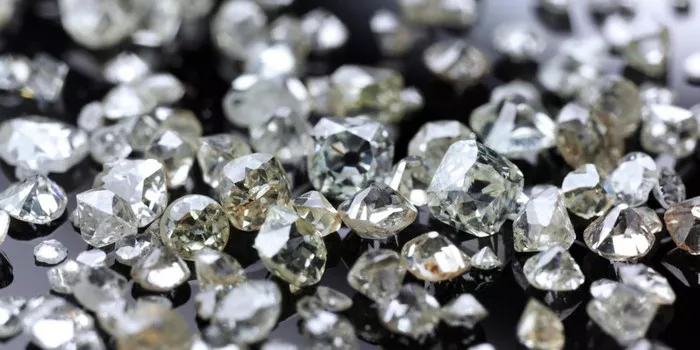Diamonds, with their timeless allure and enduring value, have captured the fascination of humanity for millennia. From their humble beginnings in ancient India to their modern-day dominance in global markets, the story of diamonds is one of discovery, trade, and transformation. Let us embark on a journey through time to explore the remarkable evolution of these precious gems.
Ancient Origins:
The tale of diamonds begins in the mists of antiquity, tracing back to the 4th century BCE in the riverbeds of India. It was here that diamonds were first discovered, not through mining as we know it today, but by sifting through sediment in rivers and streams. These early diamonds, while scarce, held immense significance, revered for their rarity and beauty.
In ancient India, diamonds were more than mere gems; they were symbols of power, prestige, and divine connection. Royalty adorned themselves with these glittering stones, attributing mystical properties to their brilliance. The allure of diamonds extended beyond the borders of India, captivating the imaginations of traders along the ancient Silk Road.
Trade Routes and Silk Road:
The Silk Road, a network of trade routes spanning thousands of miles from China to the Mediterranean, served as the conduit through which Indian diamonds reached distant lands. Caravans laden with precious cargo traversed treacherous terrain, bridging the gap between East and West. Along this ancient highway of commerce, Indian diamonds found eager buyers among merchants and aristocrats.
However, India’s diamond reserves were finite, catering primarily to the privileged few due to their limited availability. As demand for these coveted gems surged in Europe, fueled by the burgeoning Renaissance era, explorers sought new sources to satisfy the continent’s insatiable appetite for luxury.
European Influence:
The dawn of the European Age of Exploration heralded a new chapter in the history of diamonds. Indian diamonds, coveted for their rarity and allure, became prized possessions among Europe’s elite. As trade routes expanded and maritime expeditions ventured into uncharted waters, diamonds found their way to Western shores.
Venice, a bustling hub of commerce and culture, emerged as a key destination for Indian diamonds. Merchants from across the continent flocked to Venetian markets, eager to acquire these exquisite gems. By the 1400s, diamonds had become fashionable accessories, adorning the crowns and jewelry of Europe’s monarchs and nobility.
Brazilian Discovery:
In the early 1700s, as India’s diamond supplies dwindled, a new player entered the stage – Brazil. Nestled within the lush forests of Brazil’s gold mining regions lay untapped reserves of diamonds, waiting to be unearthed. The discovery of diamonds alongside gold proved to be a boon for Portuguese colonizers, transforming Brazil into a significant player in the global diamond trade.
Brazilian diamonds, though plentiful, lacked the mystique of their Indian counterparts. Yet, they filled the void left by dwindling Indian supplies, ensuring a steady flow of these coveted gems to markets around the world. As Brazil rose to prominence as a diamond-producing nation, it reshaped the dynamics of the global diamond trade.
South African Impact:
The true turning point in the history of diamonds came with the discovery of vast deposits in Kimberley, South Africa, in 1866. This pivotal moment marked the dawn of a new era, as South Africa emerged as a powerhouse in the diamond industry. Cecil Rhodes, a visionary entrepreneur, seized upon this opportunity, establishing De Beers Consolidated Mines Limited in 1888.
Under Rhodes’ leadership, De Beers rose to prominence, wielding unparalleled influence over the world’s diamond supply. By 1900, De Beers controlled an estimated 90% of the global rough diamond production, consolidating its dominance through strategic marketing and resource management. South Africa’s diamond riches spurred innovations in mining techniques, cutting, and polishing, propelling the industry into the modern age.
Overall Evolution:
From their humble beginnings in ancient India to their modern-day ubiquity, diamonds have undergone a remarkable evolution. Through centuries of exploration, trade, and innovation, these precious gems have transcended their status as mere adornments to become symbols of enduring love, commitment, and prosperity.
The story of diamonds is not merely one of geological formation, but of human ingenuity and enterprise. From the dusty riverbeds of India to the bustling markets of medieval Europe and the vast mines of South Africa, diamonds have traversed continents and cultures, leaving an indelible mark on history.
In the grand tapestry of human civilization, diamonds sparkle as timeless testaments to our fascination with beauty and rarity. As we marvel at their brilliance, let us remember the journey that brought these precious gems from ancient origins to global prominence, with each facet reflecting the enduring spirit of exploration and discovery.

